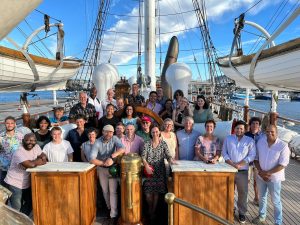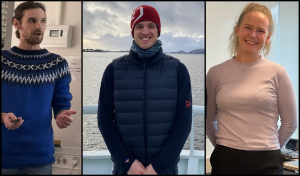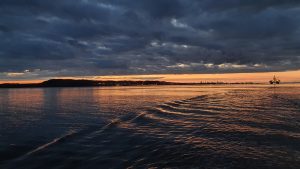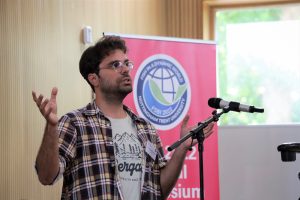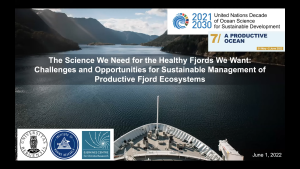Written by members of the HypOnFjordFish team // 15 February 2023
In May 2022, HypOnFjordFish were out on yet another research cruise to some of our Norwegian fjords. This time, almost all primary investigators were onboard, meaning that the ship was packed with HypOnFjordFish members from all the different work programs.
We have already outlined some of the methods we use during our research cruises, so in this post we would rather want to take you on a visual journey through what life onboard a research vessel can be like!
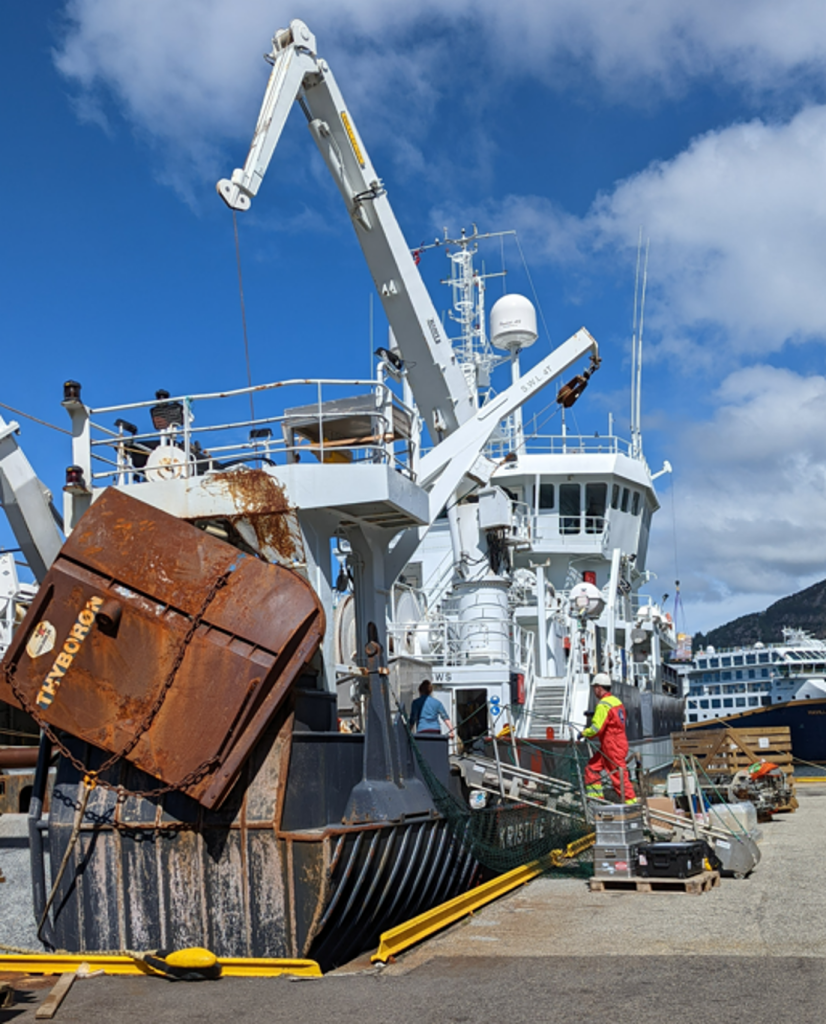
Our wonderful research ship: Kristine Bonnevie (previously called Dr. Fridtjof Nansen). It is a perfect ship for the Norwegian fjords.
Photo © Karin Limburg

Before we go out on any cruise, we need to go through a safety demonstration. Here Karin is modelling how to properly wear a safety suit – which we always hope we will never have to use!
Photo © Francesco Saltalamacchia & Karin Limburg
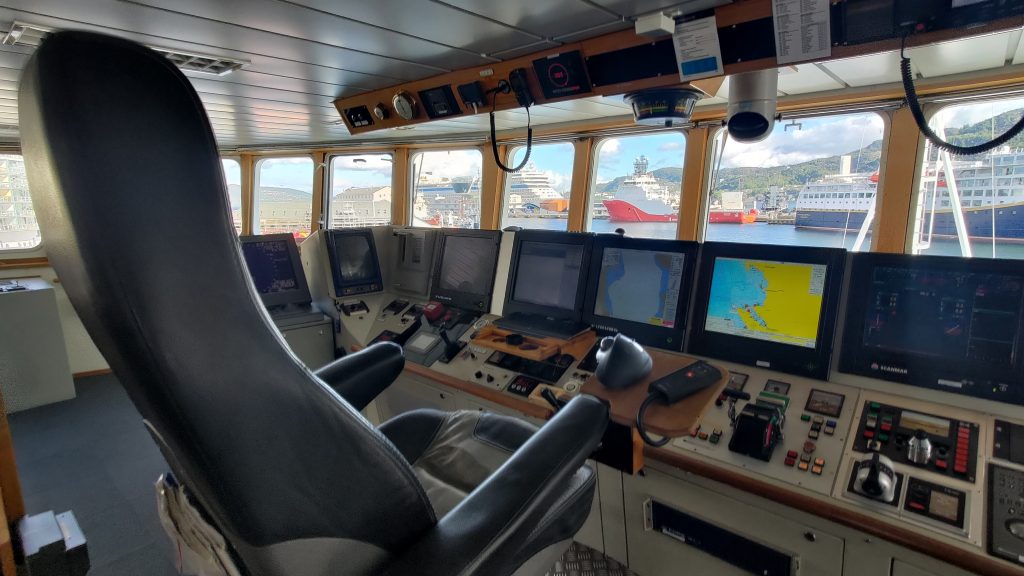
The captain operates the ship from the bridge, where they have full control of everything. They also get the best view!
Photo © Francesco Saltalamacchia
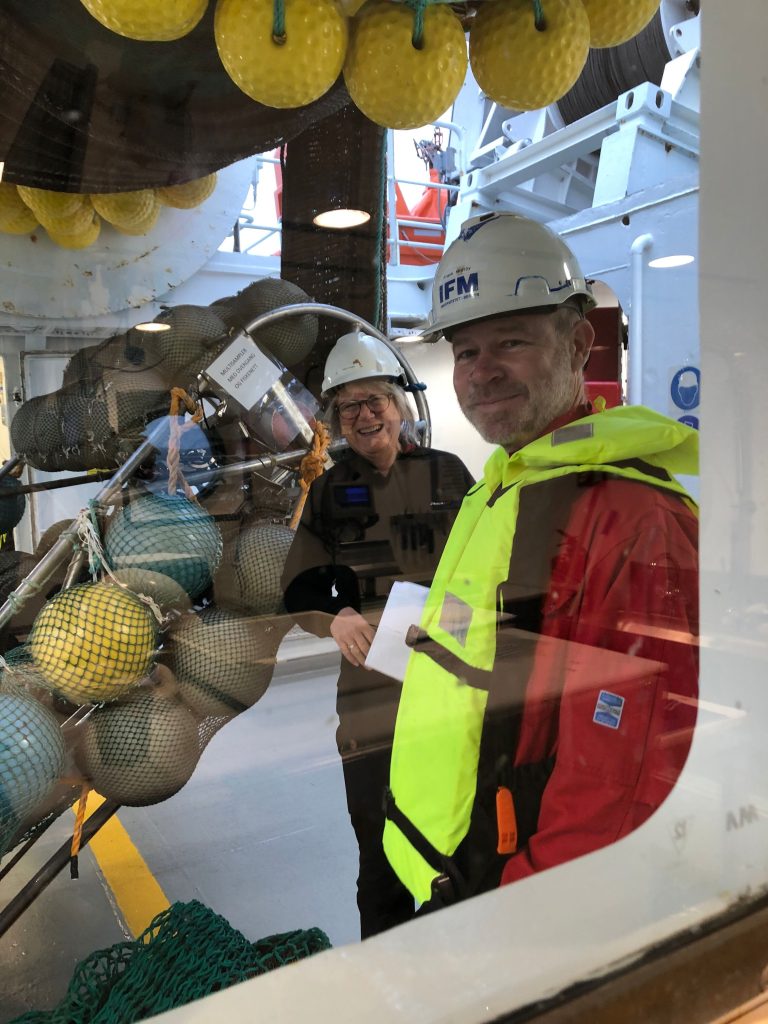
Frank and Anne Gro (cruise leader) out on deck. Are they discussing plan A, B or C for the cruise? We always plan our cruises well in advance with daily schedules and all. However, when working in the field, we must always be prepared to change and adapt to unexpected scenarios so that we get the most out of our valuable field time.
Photo © Lisa Levin
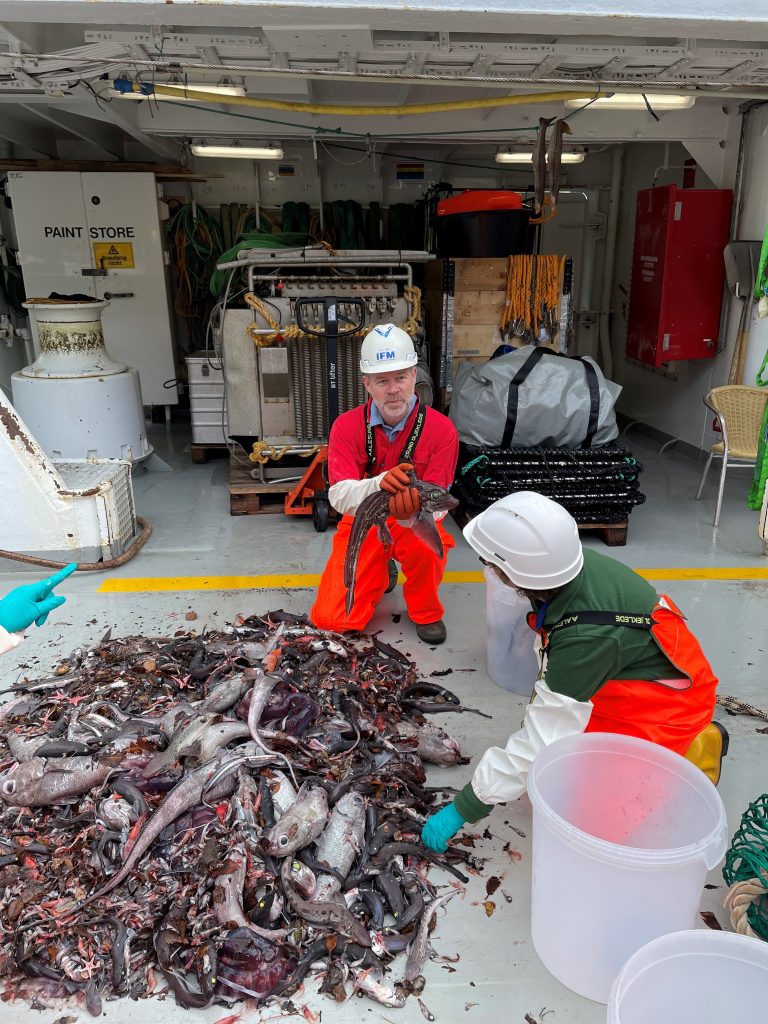
Here is a bottom trawl catch from 360 m in Sørfjorden. These trawls give us a glimpse of what life close to the fjord bottom looks like. There seems to have been many roundnose grenadiers (Coryphaenoides rupestris), and Frank is holding up a beautiful rabbit fish (Chimaera monstrosa).
Photo © Anne Gro Vea Salvanes
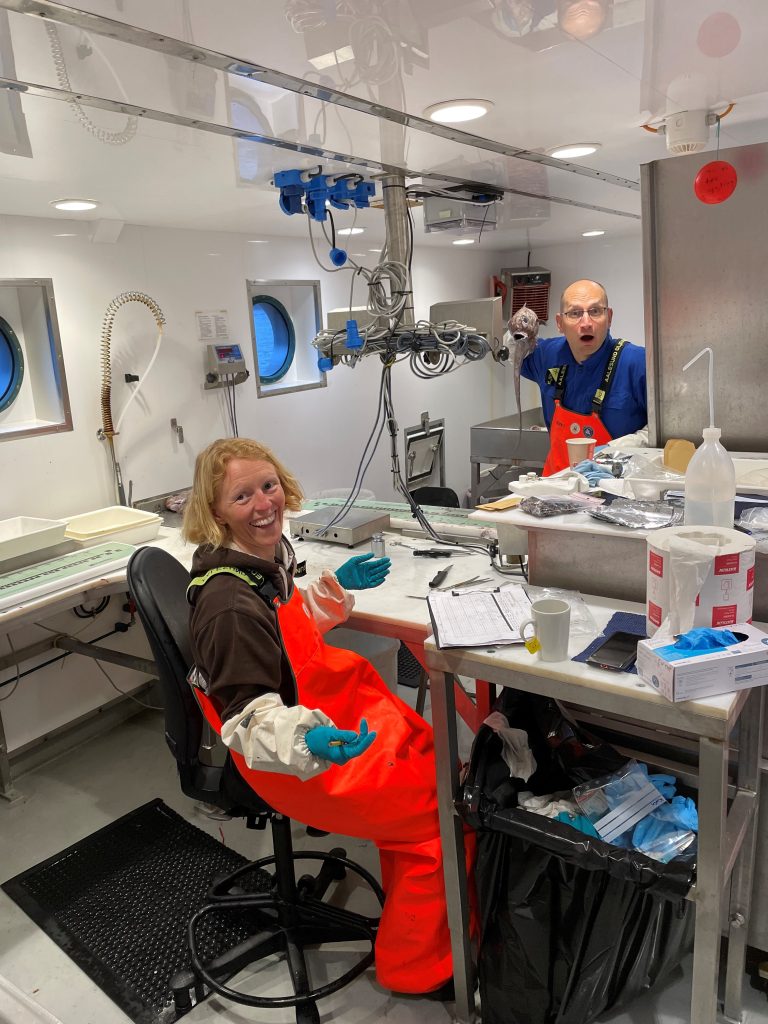
Elin and Heikki are working on fish samples. But looking a bit closer in the back: is Heikki the one to the left or to the right?
Elin is a geophysicist so she typically does not sort as much fish during research cruises as we biologists do. She is associated with two other exciting fjord projects: CLIFORD and FJO2RD!
Photo © Anne Gro Vea Salvanes
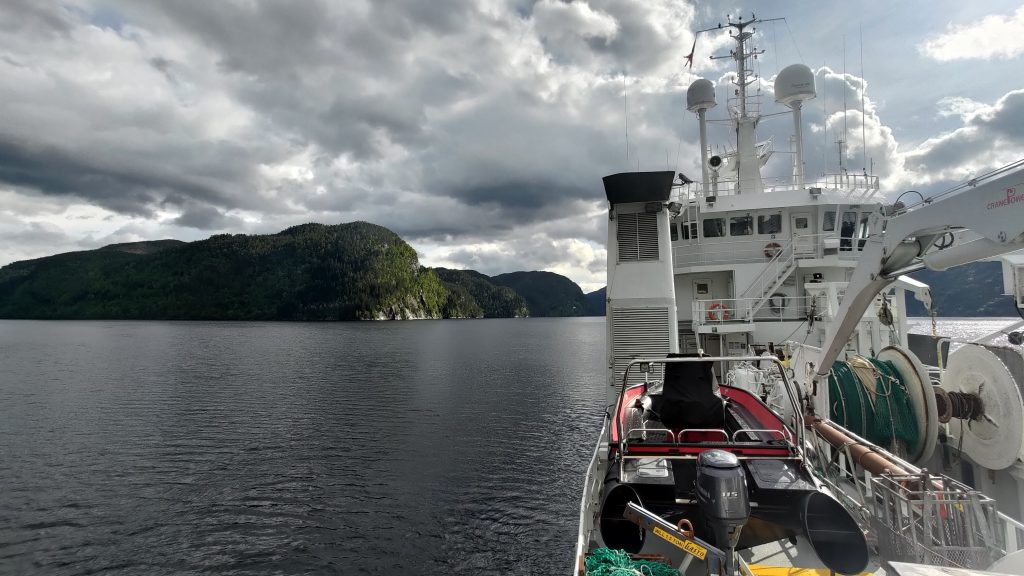
Cruising through the fjords is always beautiful!
Photo © Francesco Saltalamacchia
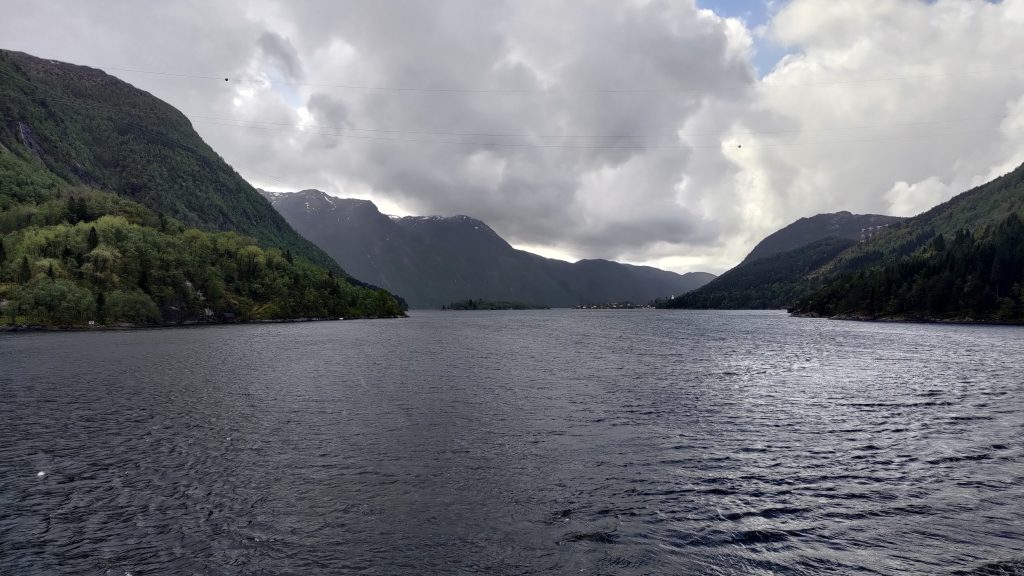
Photo © Francesco Saltalamacchia
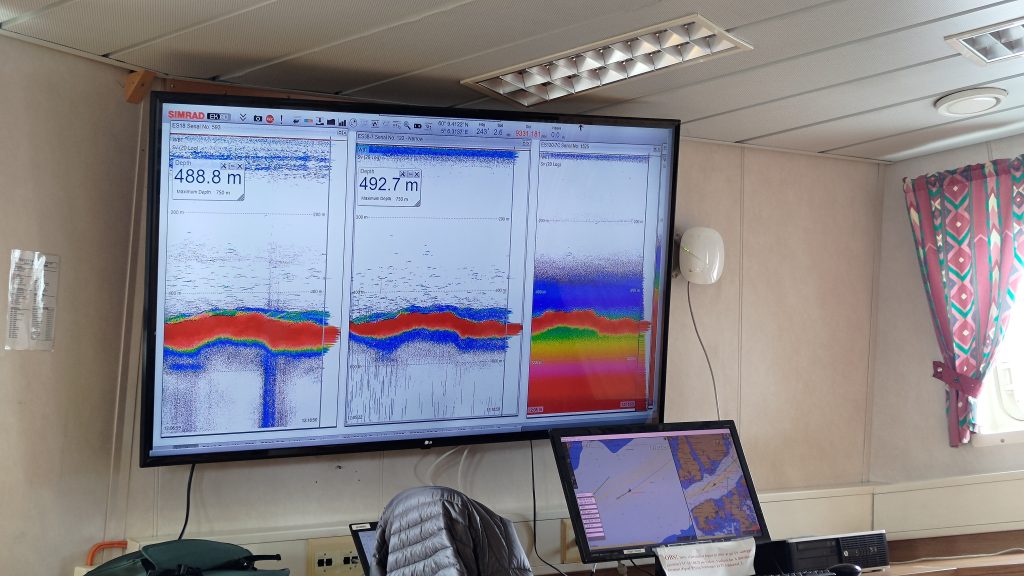
Like bats, scientists have the power to use sound to explore the environment around them – or rather below them. An echosounder attached to the ship’s hull sends waves of sound through water and uses the echo which is bounced back by living organisms or the seafloor to draw a picture of the underwater world.
Photo © Francesco Saltalamacchia
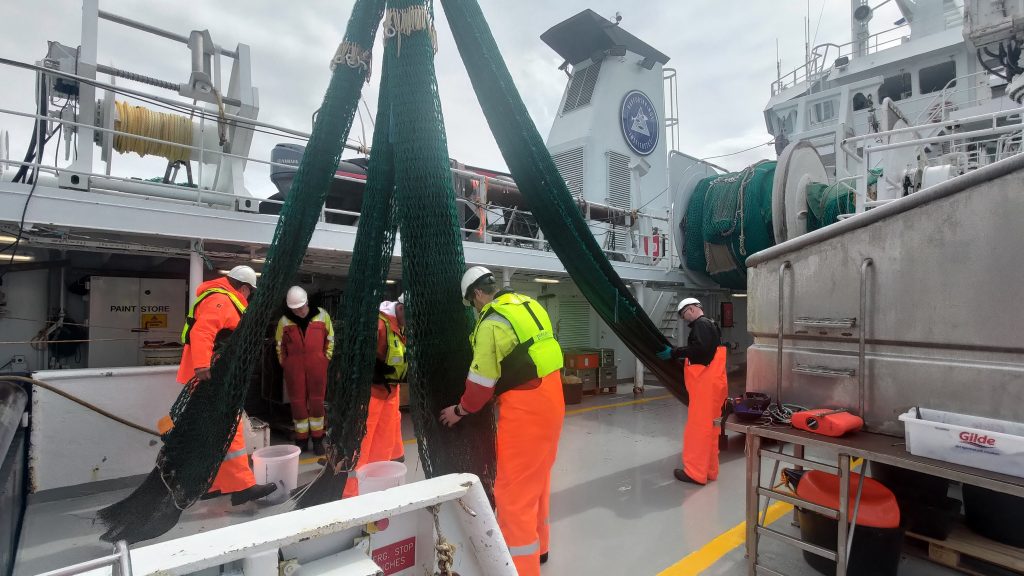
One of the questions we are interested in knowing more about is how organisms distribute vertically in the fjord basin. Here we see the different trawling bags (codends) that we can use to collect depth-stratified data!
Photo © Francesco Saltalamacchia
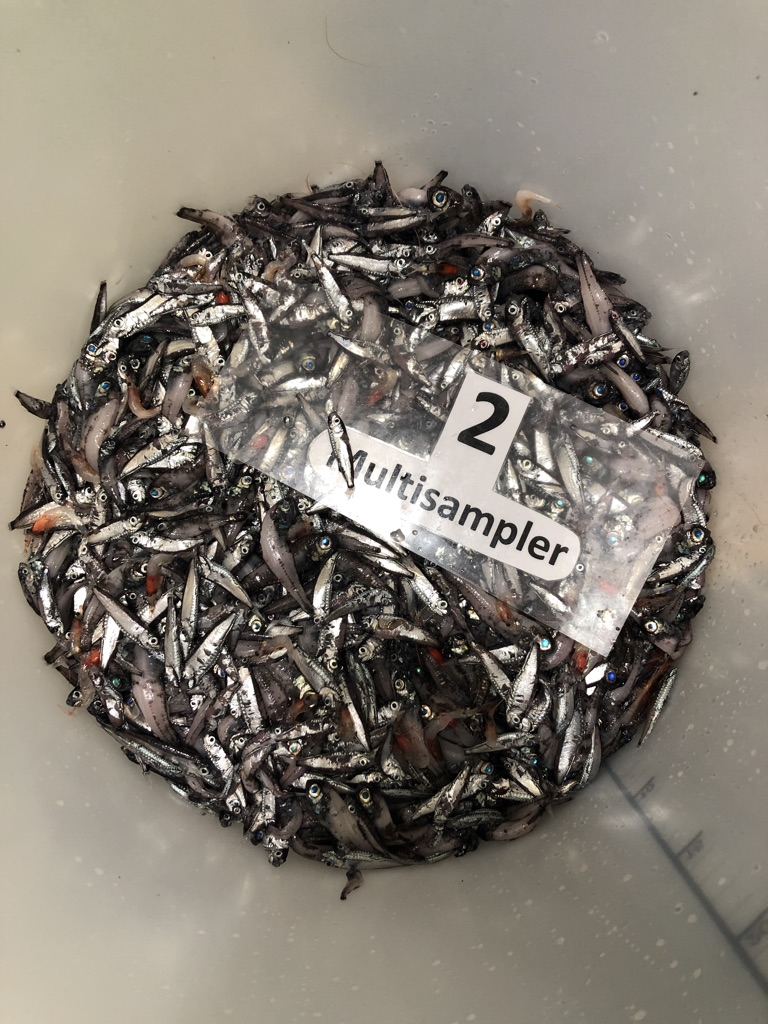
Here is a a catch from 100-200 m depth. If you look closely you can see that there are at two species of small fish: these are two so-called mesopelagic fish. The mesopelagic zone is defined as the zone from 200-1000 m depth. The silvery fish are pearlsides (Maurolicus muelleri), while the others are glacier lanternfish (Benthosema glaciale).
Photo © Lisa Levin
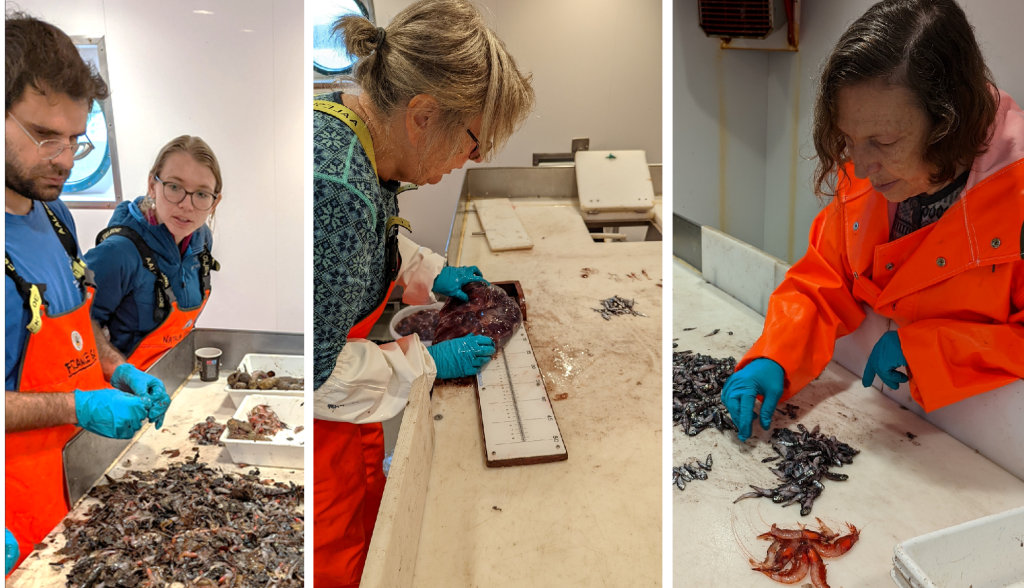
We spend a lot of time by the sorting table to sort our catches into species and to collect the relevant measurements for all of them.
Photo © Karin Limburg
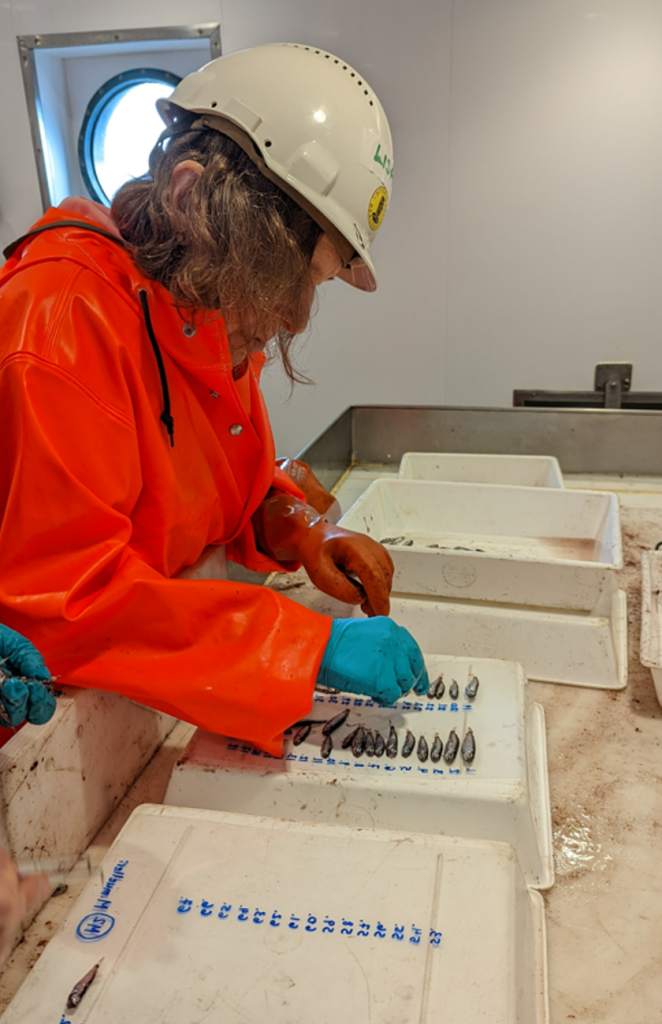
To make the length measuring of small mesopelagic fish a bit more efficient, we measure them using a scanner and an image software. Here, Lisa is lining them up before we scan them.
Photo © Karin Limburg
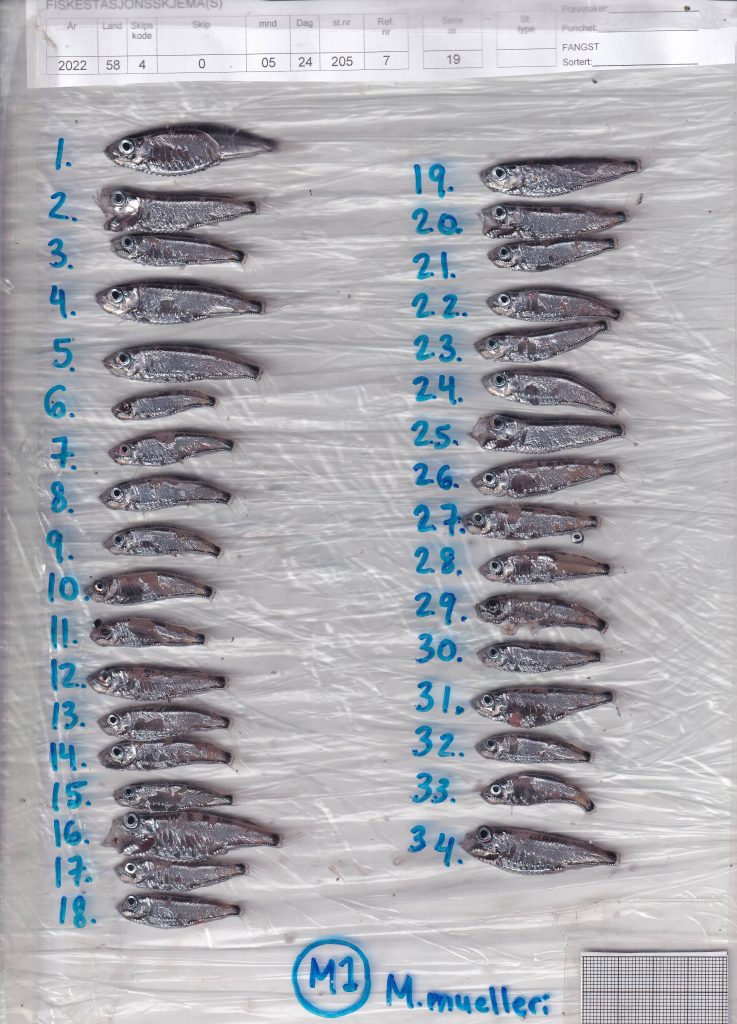
A scanned sheet of pearlsides. By having the scanned pictures we can always go back an measure additional parameters if we see the need for that.
Photo © HypOnFjordFish
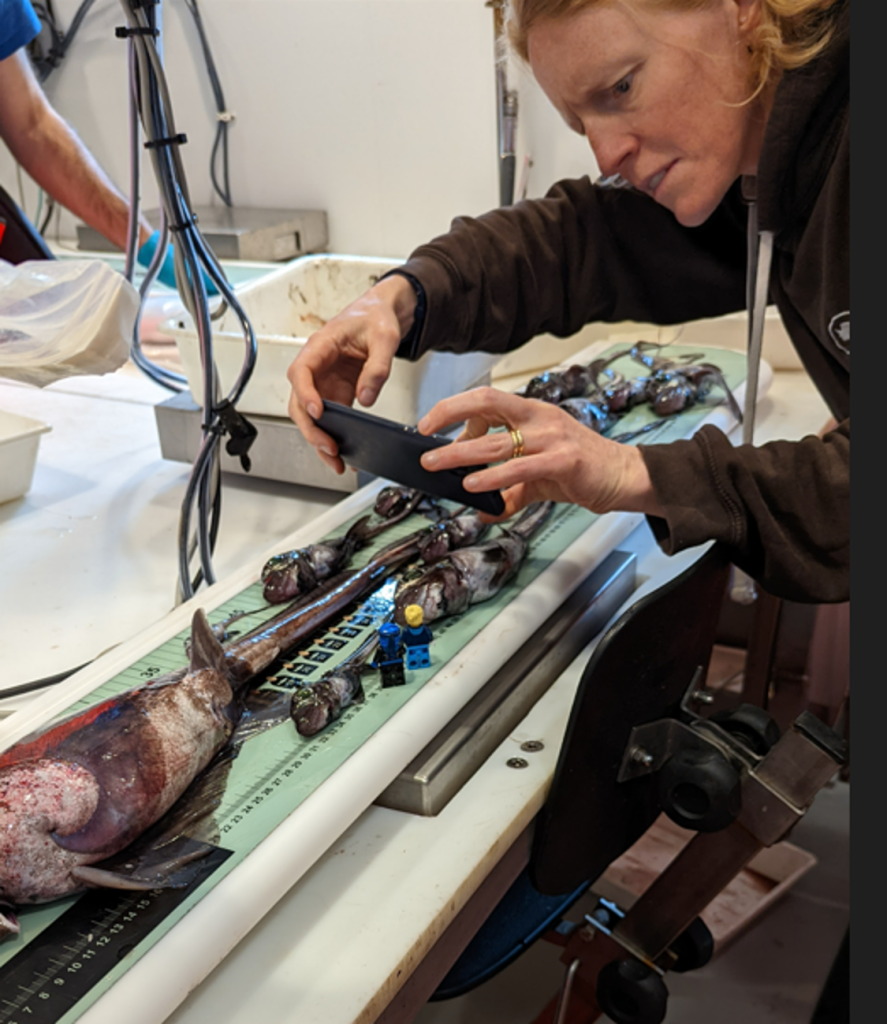
Elin is taking pictures for her blog where she uses the two lego figure characters: Ninja and Dr. Elin to explain science to a broader audience. Perhaps will she put out something about the fish-related research too?
Photo © Karin Limburg
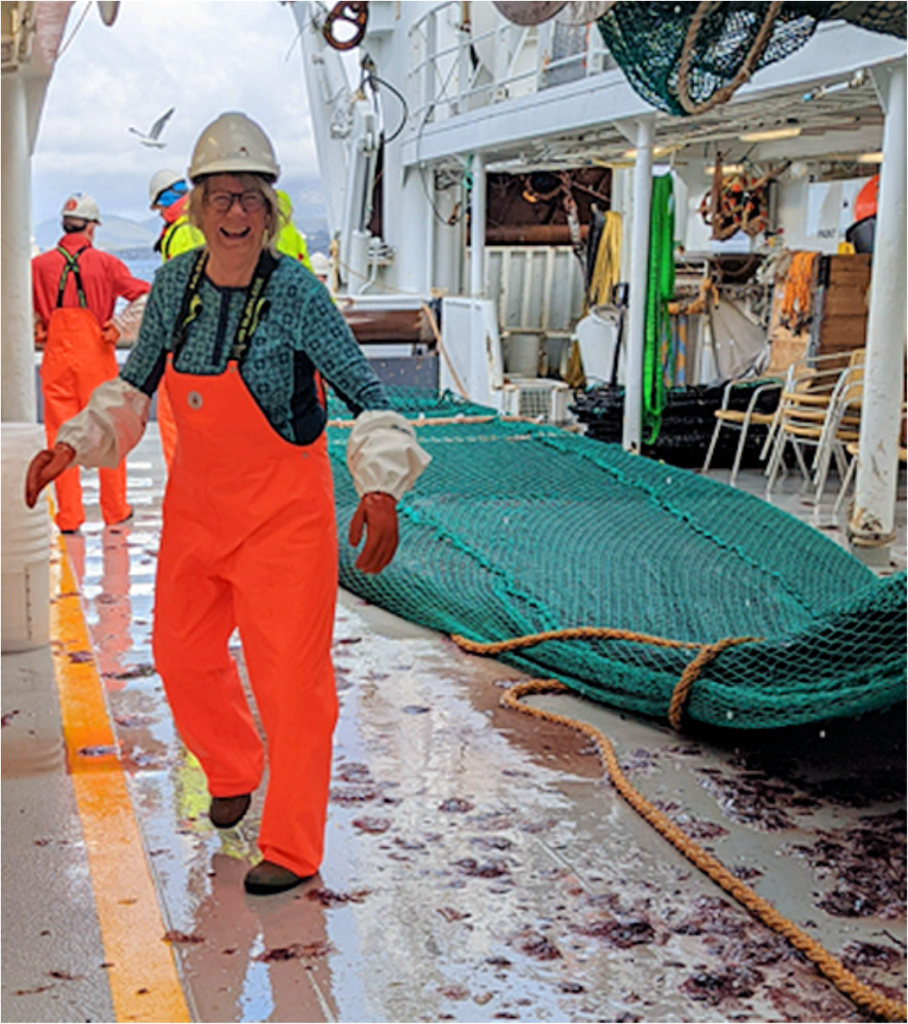
Our cruise leader, Anne Gro, smiling out on deck. The haul behind her weighed 5.2 tonnes! If you look closely on the deck you can get a hint about what is causing the enormous weight. Jellyfish!
In some of these fjords we have large populations of the helmet jellyfish (Periphylla periphylla)! They thrive at greater depths in darkness during the day and migrate towards surface waters during the night – like many of the other species we work with.
Photo © Karin Limburg
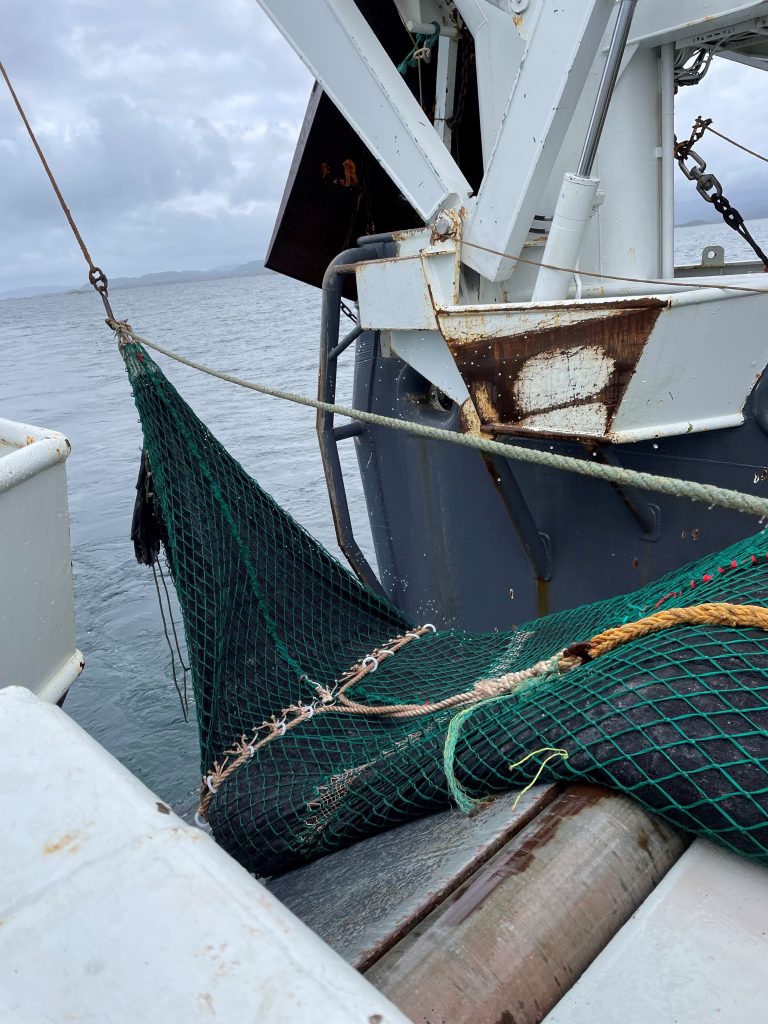
For the very large trawl catches we need to take a subsample of the catch. In the case of this deep haul we would first estimate the total catch by measuring the length, width and height of the codend and then collect 1-2 buckets (ca. 25 kg) in the front, middle and end. Here, we are in the middle of gently releasing parts of the catch from the codend to sample the next part of it.
Photo © Anne Gro Vea Salvanes
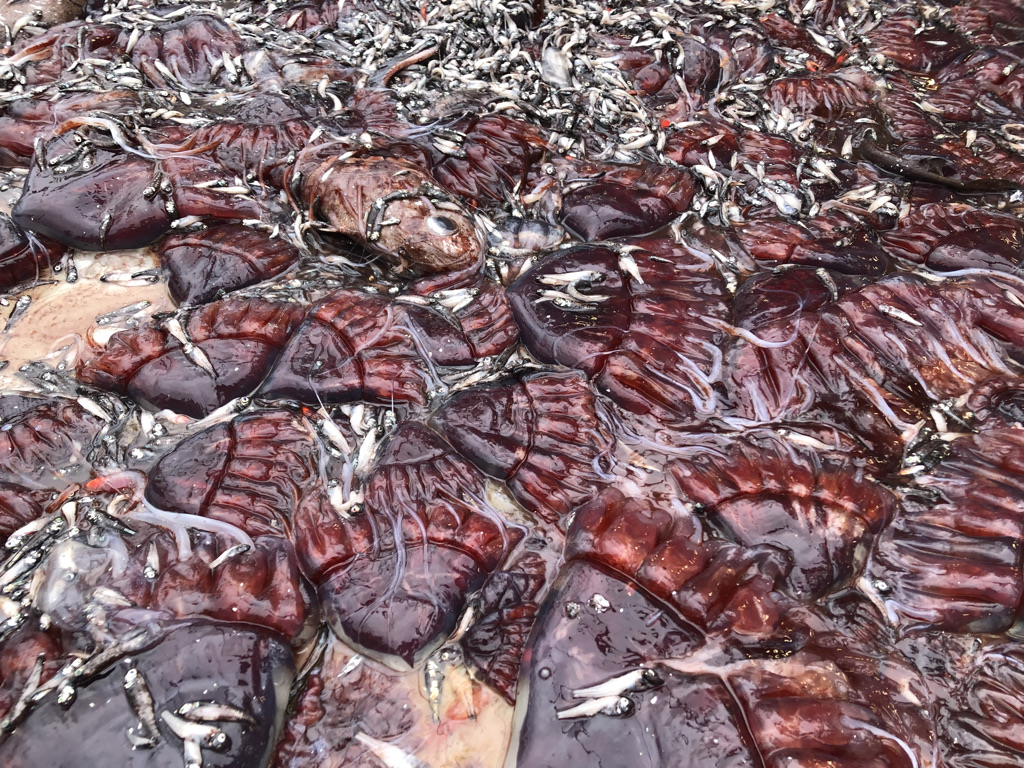
So much jellyfish!
Photo © Lisa Levin
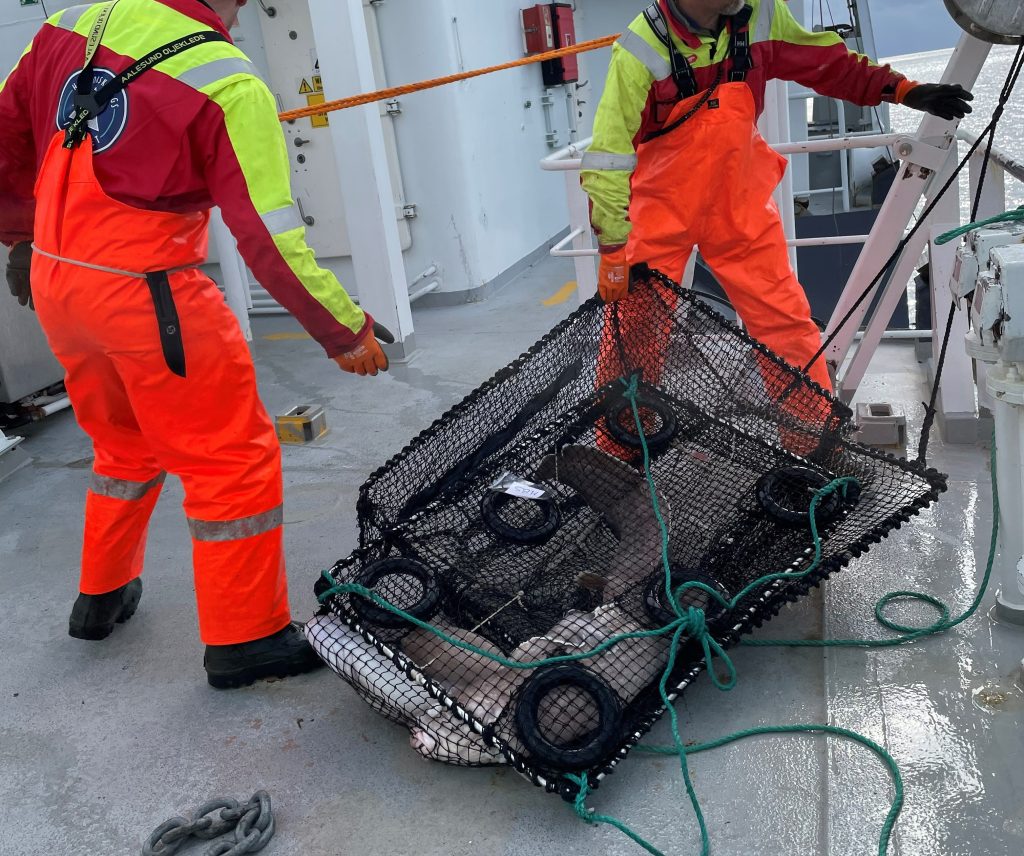
Some fjords are more challenging to sample due to different cables along bottom. So in addition to our trawls that we haul through the water column we also use baited traps. In this one, from 400 m depth, we caught huge tusk (Brosme brosme).
Photo © Anne Gro Vea Salvanes
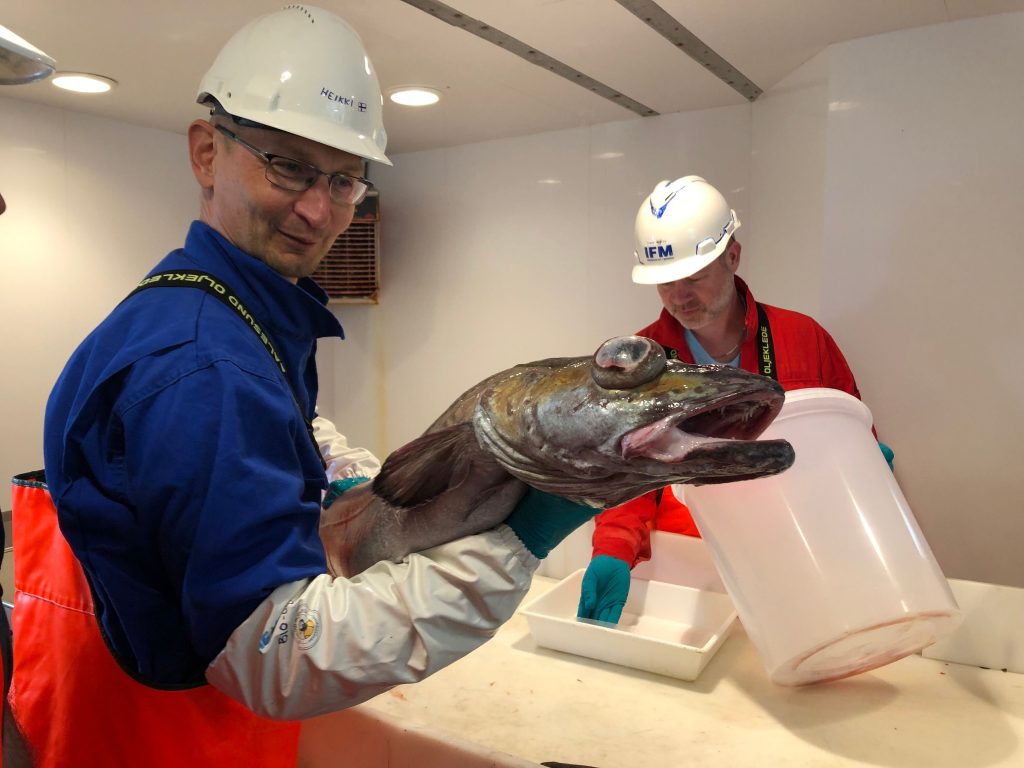
Heikki holding up a large blue ling (Molva dypterygia).
Photo © Anne Gro Vea Salvanes
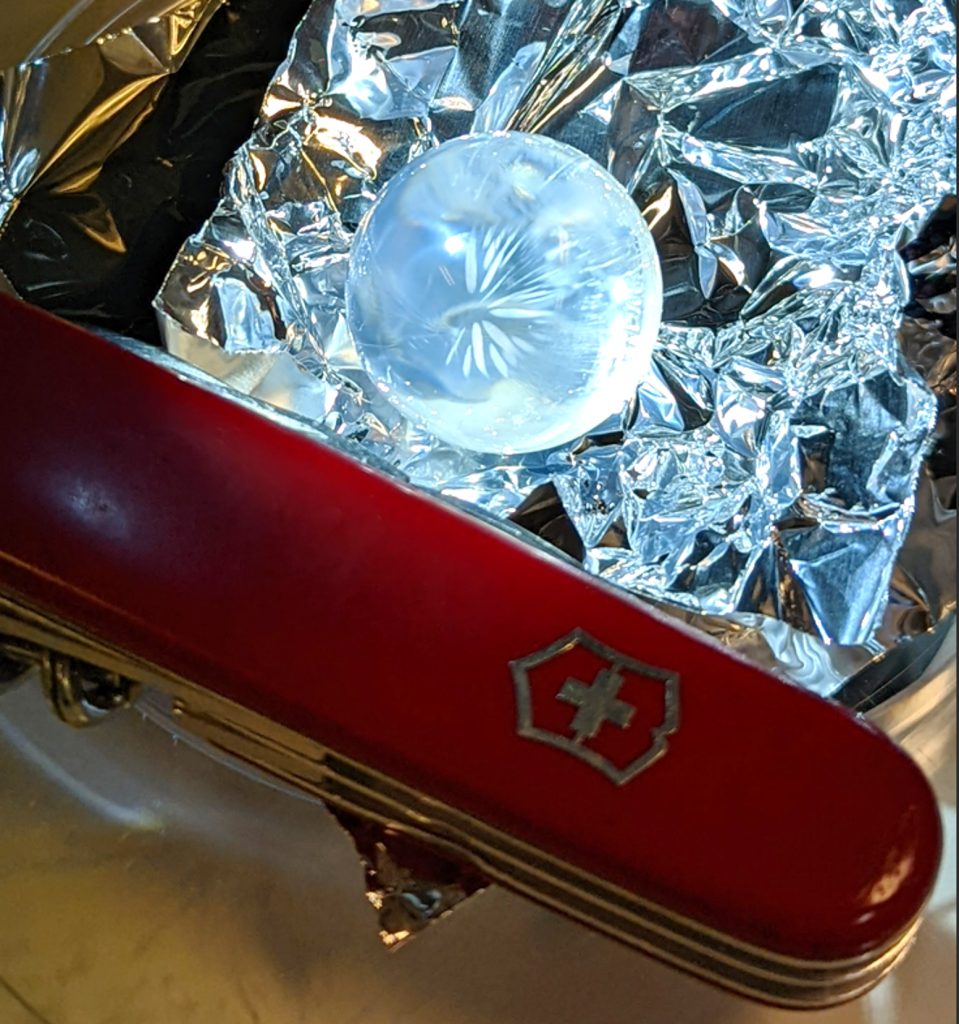
This is a dried eye lens from a blue ling. If we do a chemical analysis of this, we might be able to learn more about the story of this fish. Where has it been and what environments has it been in?
Photo © Karin Limburg
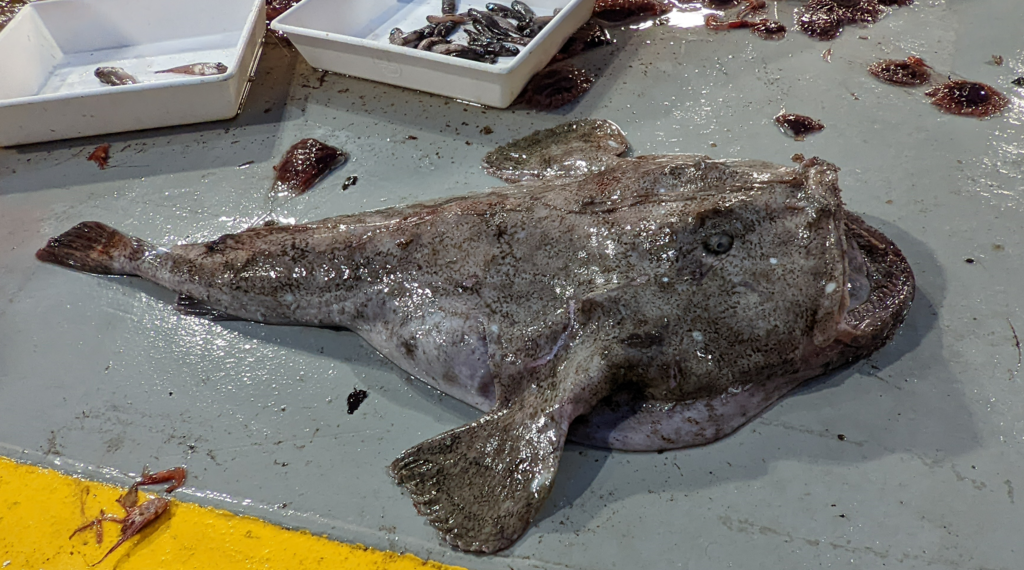
There are many fascinating creatures along the bottom Here is a monkfish (Lophius piscatorius). If you look closely, you can see its “fishing rod” on the head lying between its eyes.
Photo © Karin Limburg

Frank and Arved seems to be discussing this small shark. This is a velvet belly lanternshark (Etmopterus spinax). Like many other creatuers in the deep, they actually glow in the dark thanks to their bioluminescence! Think about that for a second: self-glowing sharks!
Photo © Karin Limburg
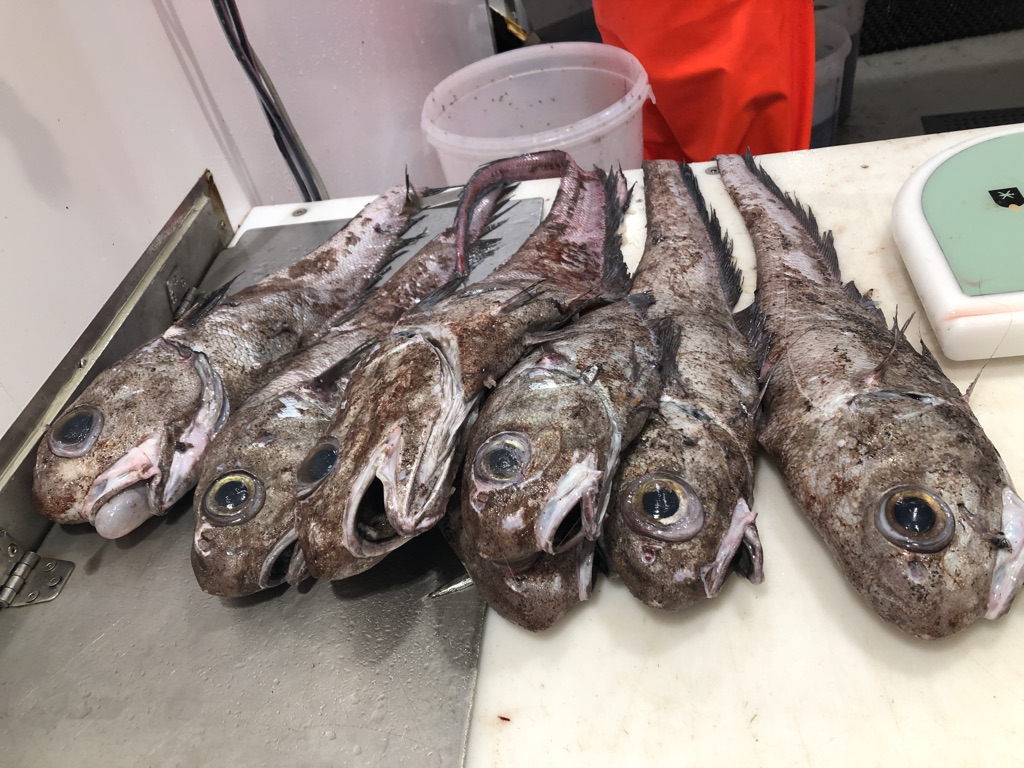
Grenadiers that has not yet been processed. This species can get up to 60-70 years old, which makes it a very interesting species to study. Could their ear stones (otoliths) tell us something about the past of the fjord?
Photo © Lisa Levin
And here the visual tour from our cruise ends. After seven days we had to leave the fjords and return to Bergen – with hard drives filled with new data and many boxes with preserved samples ready to be analyzed further on shore!

